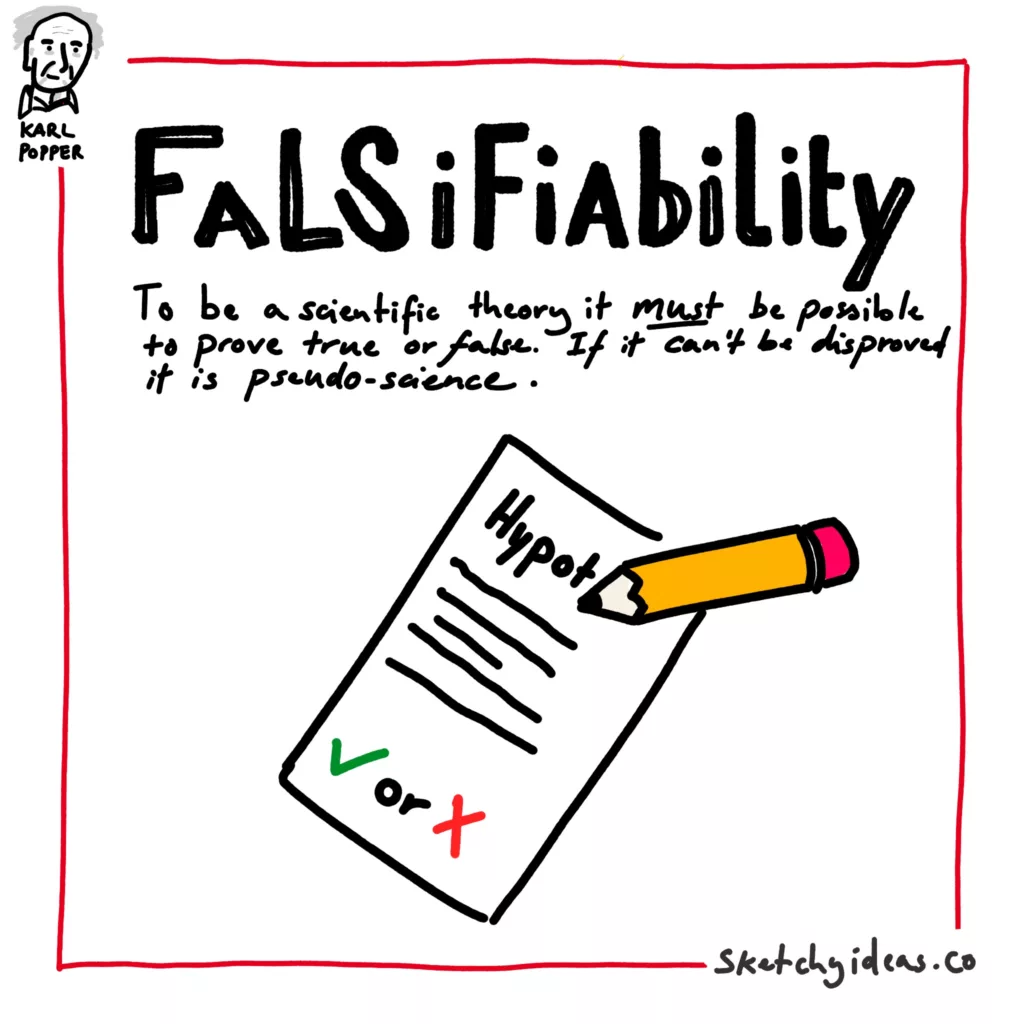How do you know you are right?
Sounds like a simple question but the truth is far more complicated. Most people look to prove that they are right but today’s mental model teaches us that the opposite is probably better.
If you want to be right, try to prove you are wrong.
What is Falsifiability?

Falsifiability states that for a hypothesis to be valid, it must be possible to both prove or disprove it. Here are two examples to demonstrate.
You have to run a test to see if people who eat sweets do better in class.
You watch who takes a sweet and you compare their performance in class to those who don’t. You notice a correlation that those who take sweets do better.
If you stop here, it’s not falsifiable.
So you compare the scores of the students again but this time neither group has a sweet. You notice the same students outperform the others. This shows that there was another factor at work — perhaps the best students thought they could take sweets.
(this is just a hypothetical. The students might do better so the sweets might help. Either way, by making it falsifiable you can be sure of your conclusion).
You run a marketing team and believe that updating a webpage will increase sales. You identify some criteria to evaluate the webpage (traffic, click-through rate, sales) and take a measure of their current
Origins: Karl Popper’s Philosophical Insight
Karl Popper is the key figure behind the principle of Falsifiability.
At the time, the prevailing wisdom was that scientific theories could be verified by observations. He, instead, argued that a scientific theory should be inherently disprovable. This shift helps to overcome cognitive biases that can make untrue theories appear valid.
It was a key step in the development of the scientific model.
Applying Falsifiability in Your Work
Falsifiability helps us to make informed decisions based on hard evidence and not see patterns where none exist. It also helps us to find the real cause of effects which allows us to optimise our efforts.
Here are some simple ways you can apply this principle.
- Set criteria that prove and disprove your theory
- When results are unexpected, create a new test to confirm your explanations
- When you do get confirming evidence, try to disprove that evidence
These principles can be dangerous in a company.
There is often social pressure to show that your work is always good. After all, if you prove your theory is wrong, you are liable for that error. In the long run, seeking to uncover the truth leads to better outcomes.
Creating a workspace where experimentation, including failures, are accepted is key.
Apply falsifiability in life
But it isn’t just company actions that we can test.
We can use it to come to better political beliefs, health routines and even shopping decisions. By seeking to disprove our ideas, we can see if they really are true.
Not all activities are worth this effort, but being open to evidence that goes against our expectations is a positive first step.
Look to be wrong
If you want to be more right, you need to prove yourself wrong.
Only by challenging our ideas, actions and beliefs can we become more right. While we may still arrive at false conclusions, it is far harder than if we just seek to prove our existing thoughts.
I hope you enjoy being wrong.

Leave a Reply